Where to See Pink Dolphins in Hong Kong and How to Choose a Responsible Tour Operator
See the endangered Chinese White Dolphin in its natural habitat with Hong Kong Dolphinwatch
Up until recently, I prioritized traveling to far-flung places like Italy, Australia and South Africa over my own backyard in Hong Kong. I could always explore Hong Kong later on, it would always be there and there’s no need for a sense of urgency, right?
Turns out that I was pretty dead wrong, because seeing a pink dolphin in Hong Kong has always been on my to-do list, but the local dolphin population (which was tiny to begin with) has halved in the past couple of years and their survival is facing an enormous uphill challenge.
“The number of dolphins in Hong Kong fell to a record low of 32 in 2018/19. Although it rebounded slightly to 52 for the year 2019/20, it dropped again to 37 for 2020/21.” Source
“In 2021, the combined estimate of dolphin abundance in Hong Kong waters in the four main survey areas of dolphin occurrences was 40
(the combined estimates for the last five years, i.e. 2016 to 2020, were 47, 47, 32, 52, and 37 respectively).” Source
Essentially, in other words, it is estimated that there are only approximately 40 Chinese White Dolphins residing in Hong Kong waters. While some research suggests this population are part of a larger group of a couple hundred that live in the broader Pearl River Delta region, all agree that the numbers are dropping each year. After doing some research into ethical pink dolphin watching tours in Hong Kong, I joined a group of about 25-30 people to embark on a half-day boat trip to try to spot some pink dolphins.
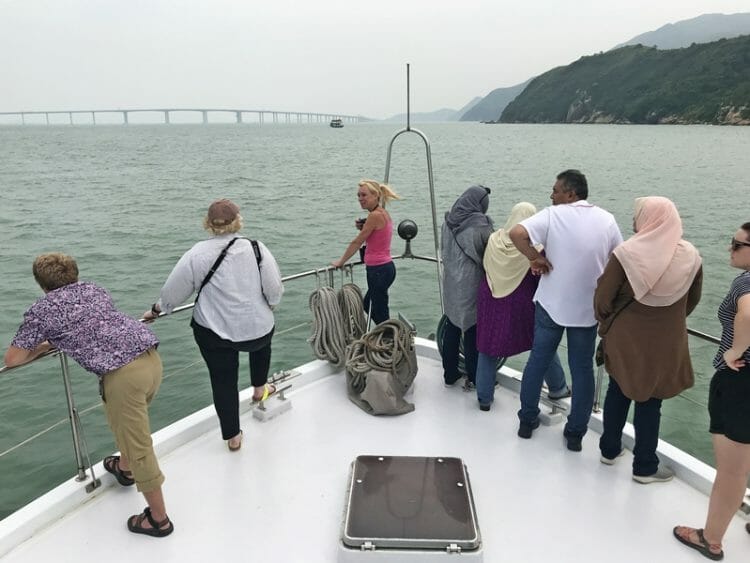
I’ve been on this tour twice, and both times we ended up spotting no less than 6-8 different pink dolphins over the course of 2 hours on the boat. I couldn’t recommend this Hong Kong day trip more – Dolphins are such intelligent and playful creatures, and the opportunity to observe them frolic in their natural habitat is not to be missed.
Going on a pink dolphin watching tour is one of the most unique things to do in Hong Kong, read on for everything you need to know to see pink dolphins in Hong Kong!
About the Hong Kong pink dolphin
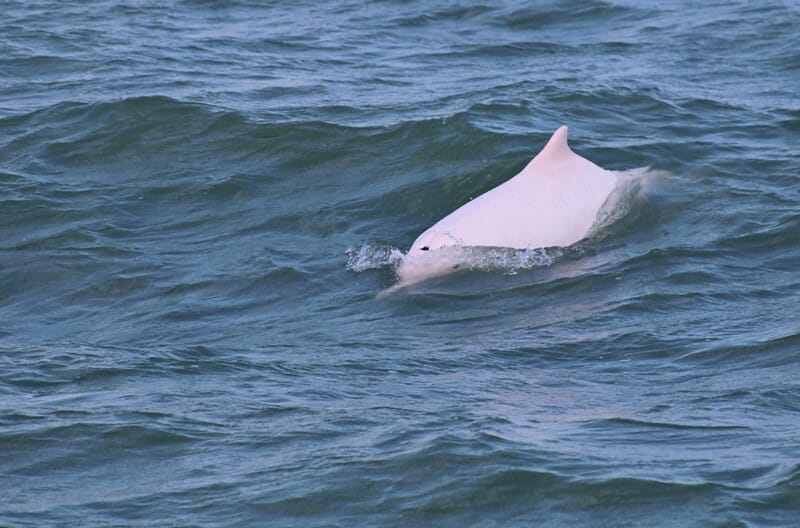
Are pink dolphins real? Yes! Pink dolphins in Hong Kong were first recorded in the Pearl River Estuary by explorer Peter Mundy in the early 17th century, and they are also known as the Chinese White Dolphin.
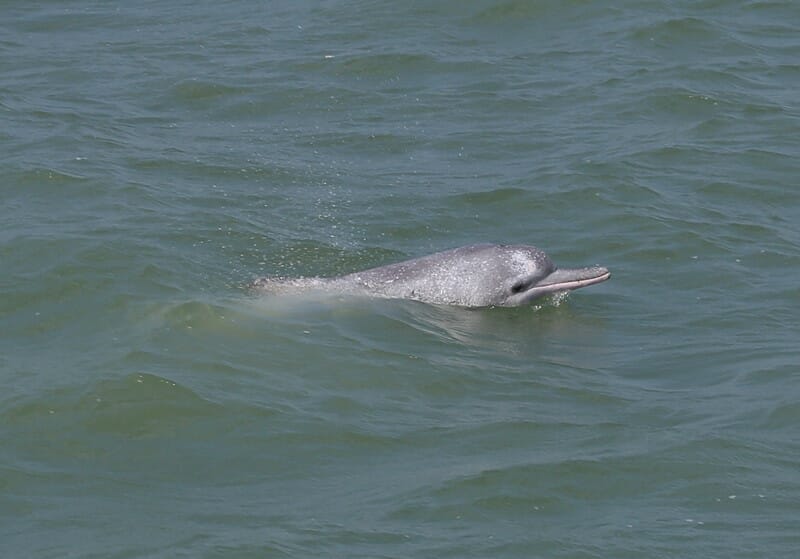
Why are pink dolphins pink? There are a couple of theories – the pink dolphins in Hong Kong have no predators, so they’ve evolved and lost the need for camouflage. They are also born dark grey, but their colouring fades to a light grey before turning completely white with some grey spots. Their pink colour is thought to be caused by “blushing” when the blood flows to the surface.
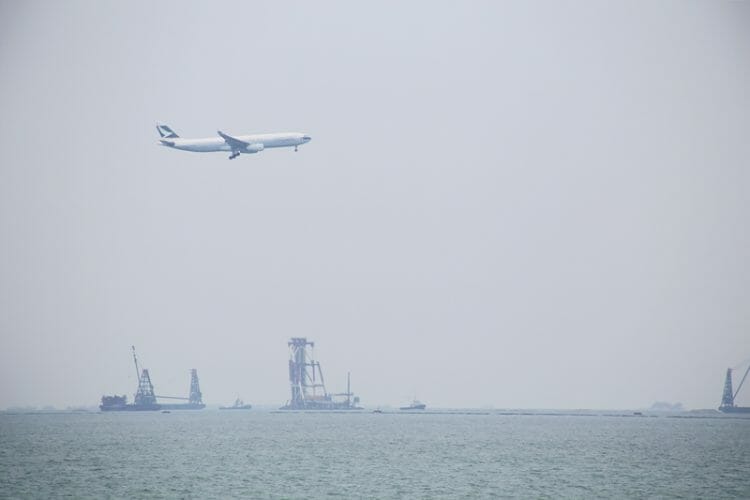
In Hong Kong, the pink dolphins can mostly be found north of Lantau island (home to the international airport). While elsewhere around the world dolphins swim in pods of up to a few dozen, Hong Kong pink dolphins typically swim in groups of two to three.
“Similar to past monitoring periods, the majority of dolphin groups sighted in 2021-22 were small, with 51.2% of the groups composed of 1-2 animals, and 72.9% of the groups with fewer than five animals. Only ten out of the 170 dolphin groups consisted of more than ten animals.” Source
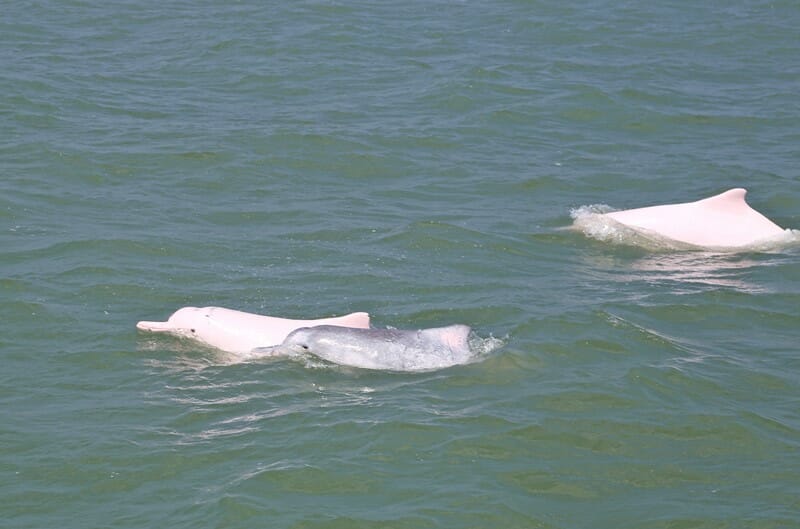
While several births have been noted by the local authorities, “over 40% of the 149 confirmed births of newborns were observed only once with their mothers before and disappeared thereafter, suggesting a low survival rate of dolphin calves,” further harming the population’s chances of thriving. To add salt to the wound, dolphins only give birth to one baby at a time and don’t give birth again until their infants reach around three years old and leave them.
It has long been speculated that mortality of young calves can be linked to the negative impacts of water pollution, as heavy load of pollutants (e.g. DDT, PCBs) have been found among some stranded dolphin calves in Hong Kong. Continuous habitat loss and degradation, as well as the increasing amount of acoustic disturbances from marine construction works and high-speed ferry traffic, may further compound the problem. Special attention should be made to alleviate these negative impacts, as the survival of calves is the most important element for the long-term survival of the dolphin population. Source.
Ready to spot dolphins in the wild? Here is an ethical pink dolphin watching tour in Hong Kong that I recommend.
Factors threatening the Hong Kong pink dolphin population
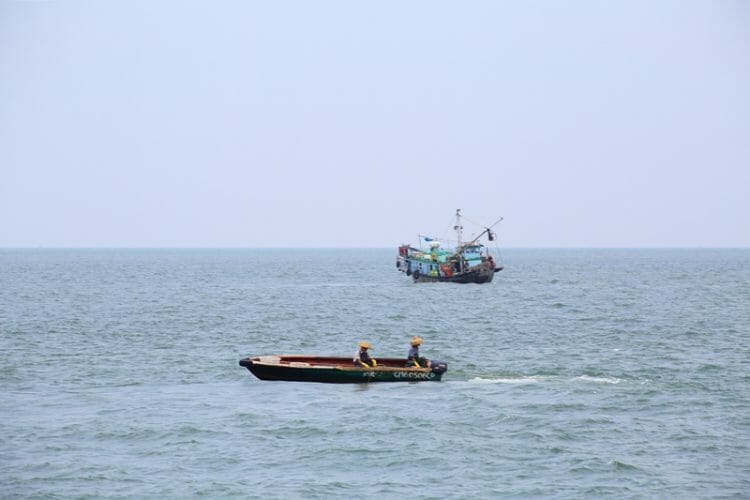
There is a myriad of threats to the survival of pink dolphins in Hong Kong. Here are a few of the main factors:
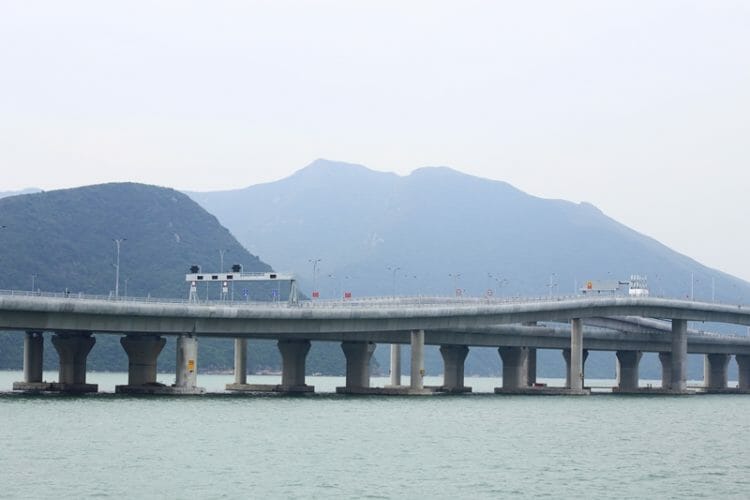
Habitat loss and disturbance – thousands of hectares of “reclaimed land” for airports, shipping terminals and roads have demolished the dolphins’ natural habitat. A new 60 kilometre bridge linking Zhuhai, Macau and Hong Kong was also built directly through the dolphin habitat.
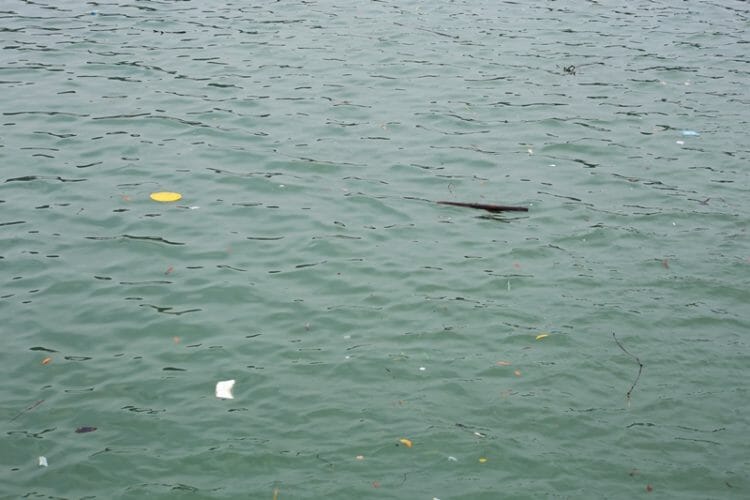
Pollution – Pollution of all sorts is on the up and up in Hong Kong. Dolphins are being poisoned to death by toxic waste, sewage and plastic. Noise pollution is also a major worry as the dolphins rely on underwater sound for navigation and communication.
Entanglement in fishing nets – Fishing nets and abandoned “ghost nets” or fishing gear can trap the dolphins or be accidentally swallowed. The Ocean Park Conservation Fund states, “We also found fishing hooks in their stomach, which demonstrated the adverse impacts of abandoning fishing gears in the sea on dolphins’ well-being.”
Vessel collision – there is a high volume of sea traffic directly across its habitat. Many dolphins have been killed or injured by colliding into boats and their motors over the years – some are lucky to survive even with damaged dorsal fins, but most do not. In our 2 hours at sea aboard the Hong Kong pink dolphin watching tour, we witnessed plenty of fishing boats, passenger ferries and even tourist boats zooming across the water, traveling dangerously close to the pink dolphins with their motors.
Overfishing – the dolphins’ food supply has slowly vanished as overfishing increases.
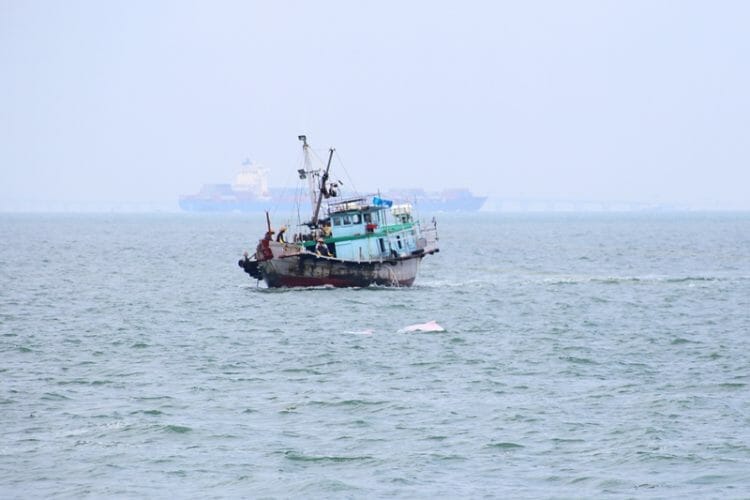
If we needed any more evidence that heavy marine traffic has a severe impact on the pink dolphin population in Hong Kong, research shows that the pink dolphins are enjoying a comeback in the waters between Hong Kong and Macau after the pandemic halted ferries in early 2020 – the population numbers are even thought to have increased by up to a third. Source.
Hong Kong pink dolphin watching tour
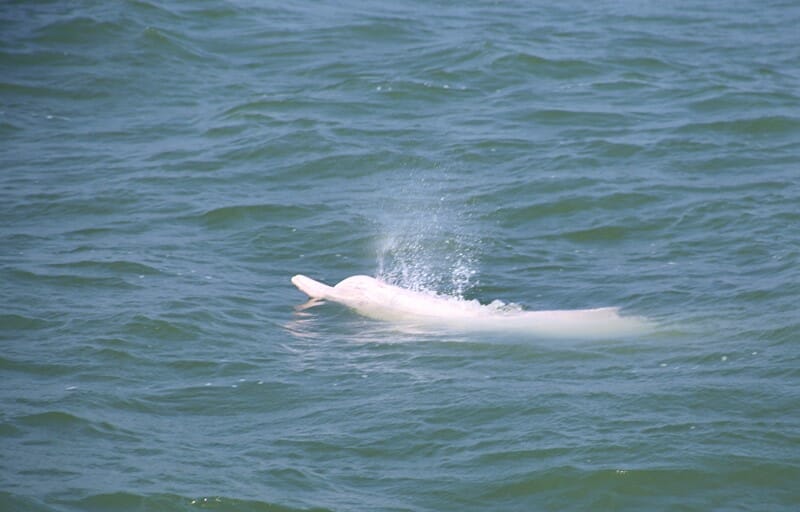
It is important to me to support and partake in ethical and responsible wildlife experiences, and we decided to book the Hong Kong pink dolphin watching tour with Hong Kong Dolphinwatch after researching several tour companies.
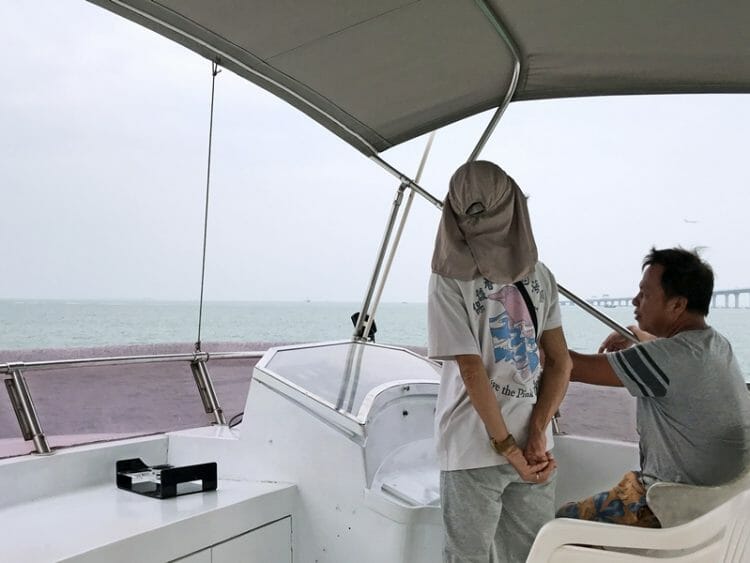
Hong Kong Dolphinwatch has three main goals: “to raise awareness of the plight of the pink dolphins; to give them an economic value by helping them contribute to the tourist economy, and to generate revenue for research and campaigns.” The company donates money to the Hong Kong Dolphin Conservation Society to support dolphin research projects, and has pledged 10% of its profits to Friends of the Earth, a local environmental charity.
The company also abides by a code of conduct for pink dolphin watching in Hong Kong outlined by the Agriculture and Fisheries Department:
- Don’t litter
- Don’t touch, swim with or feed the dolphins
- When observing dolphins near pair trawlers, dolphing watching vessels should not go near the marker buoy of the trawl net or move away suddenly after the net is hauled up
- Don’t encourage the boat crew to chase the dolphins – allow dolphins to make the choice to approach or leave
- Never intercept the course of dolphins, separate mothers and calves or corner dolphins
- Do not approach dolphins head on
- Slow down to no-wake speed and stop if dolphins appear directly ahead within 100 metres – boat speed should not exceed 10 knots
- Never conduct reverse throttling when dolphins are nearby
- Only one dolphin watching vessel should be present within 500 metres of a group of dolphins (Note: I’m not sure how strictly this is enforced. During our tour we saw two fishing boats, one of which lay a massive net right next to a pod of dolphins, one big tour boat with at least 50 people onboard, our boat, and two smaller tour vessels.)
But wait, doesn’t going dolphin watching contribute towards more boat traffic in the dolphins’ habitat? The answer is yes, it does. However, if you do want to see the dolphins then your best bet is to go with a tour operator that abides by the dolphin watching code of conduct, and one that is invested in the long-term survival of these animals.
You can also help to spread the word after the tour so that more people are aware of the plight of the pink dolphins in Hong Kong and don’t unknowingly go on irresponsible and unethical dolphin watching tours.
Don’t go on any old cheap dolphin watching tour just to save a few bucks. Want to know what else you should avoid doing in Hong Kong? Read on for what NOT to do if you’re visiting Hong Kong!
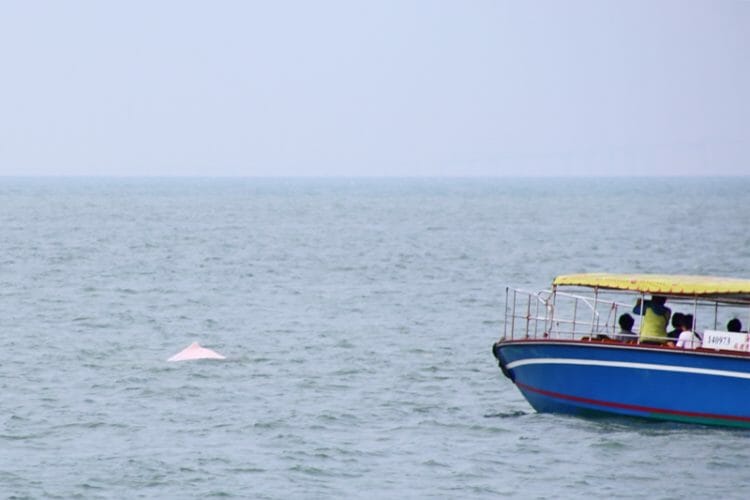
Pink dolphin watching tours by Hong Kong Dolphinwatch run year-round on Wednesday, Friday and Sunday, but tours may be rescheduled if the minimum number of participants is not met (15 people). The group meets in Tsim Sha Tsui at around 8:50 AM and are transported to the pier via coach and given a very informative briefing on pink dolphins by an extremely passionate guide.
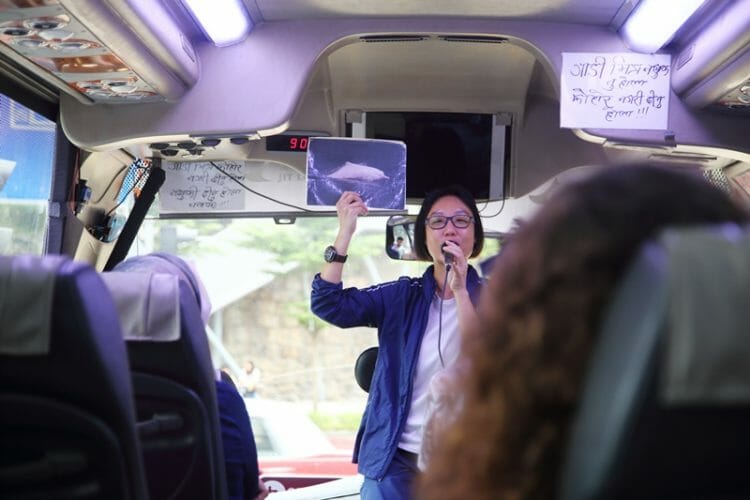
We arrived at the very comfortable boat at around 9:30 AM and were on our way to the spotting zone, where we spent two hours watching dolphins swim – one even jumped out of the water! We got back to Tsim Sha Tsui by 1 PM after the tour ended, though you are also given the option to be dropped off in Tung Chung if you’re planning to venture onto the famous Big Buddha statue.
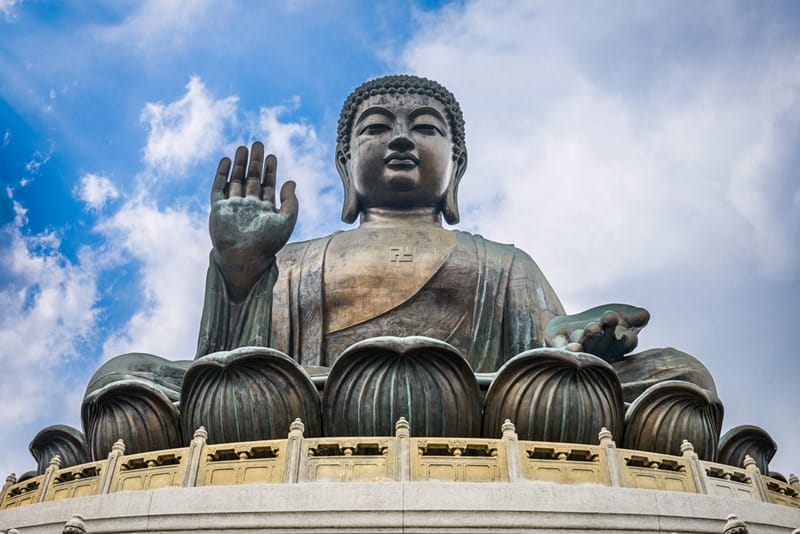
First time to Hong Kong? Click here for 8 essential things you have to do in Hong Kong if you’ve never visited before!
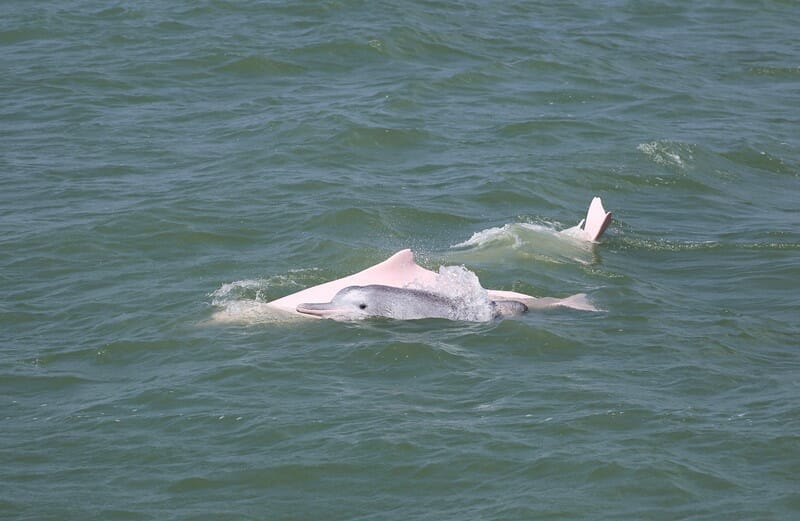
The half-day tour costs HK$580 (approximately US$7555) for adults and HK$380 (US$50) for children. This includes the shuttle transfer to the boat, insurance coverage as well as tea/coffee/biscuits on the spacious double-decker boat with an on-board toilet.
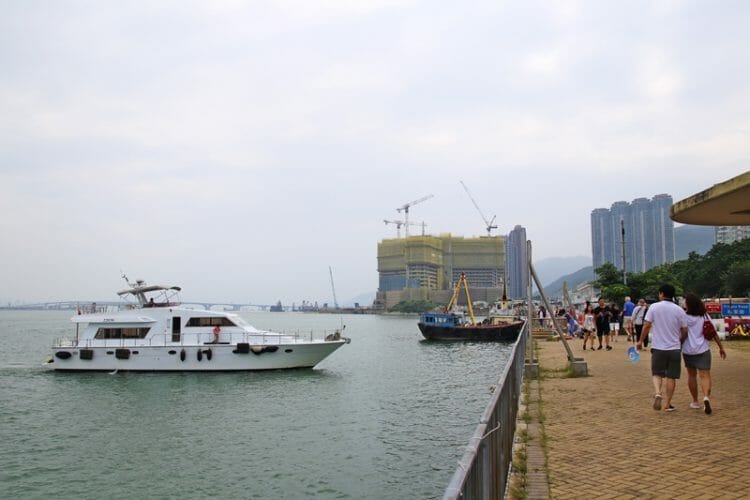
Hong Kong Dolphinwatch claims to have an average sighting rate of 97% and you can join another tour free of charge if no dolphins are sighted on your tour. Click here to book your pink dolphin watching tour with Hong Kong Dolphinwatch!
Wondering where to stay in Hong Kong? Most visitors opt to book hotels on Hong Kong Island or on Kowloon side. Look into hotels in Wan Chai, Central, Soho, Sheung Wan and Causeway Bay for maximum convenience!
There are some fantastic boutique hotels in Hong Kong: I’m a fan of The Fleming and The Hari which are both excellent boutique hotels in Wan Chai; Little Tai Hang and Tuve which are both located on the edge of Causeway Bay; as well as Ovolo Central and The Murray which are in the Central and Admiralty areas. All of these Hong Kong boutique hotels are within walking distance from a nearby MTR station, and are located on the blue Island line that runs from end-to-end of Hong Kong island. You can also click here for more accommodation options.
Best time of year to go on a pink dolphin watching tour in Hong Kong
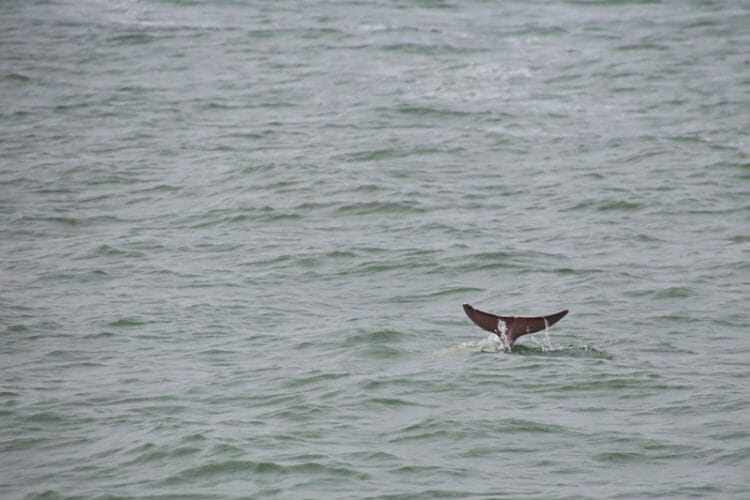
Chinese White Dolphins are a resident species of Hong Kong and can be seen year round in all sorts of weather. However, Hong Kong Dolphinwatch tends to be extremely busy in the second half of the year, so you should book in advance if you’re certain you’d like to partake in the pink dolphin watching tour in Hong Kong.
Pink dolphin photography tips
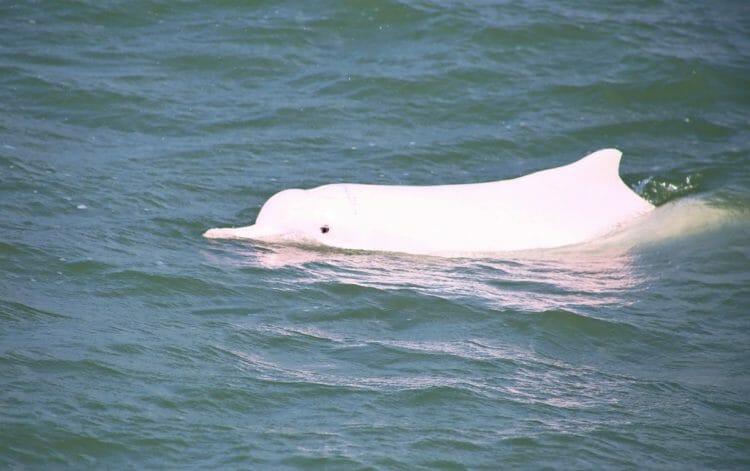
Dolphins are extremely difficult to photograph – they only come up for air for what feels like a fraction of a second, so be prepared to end up with lots of photos of fins and if you’re lucky, a tail. I brought my 70-300 mm lens and DSLR camera, and found that even the 300 mm zoom was not truly sufficient. Devastating.
It’s also very much down to luck – during the first tour I went on, the dolphins were very far away. On the second tour, they swam closer to the boat (the engine was in idle and we did not move) which made it easier to get less blurry shots.
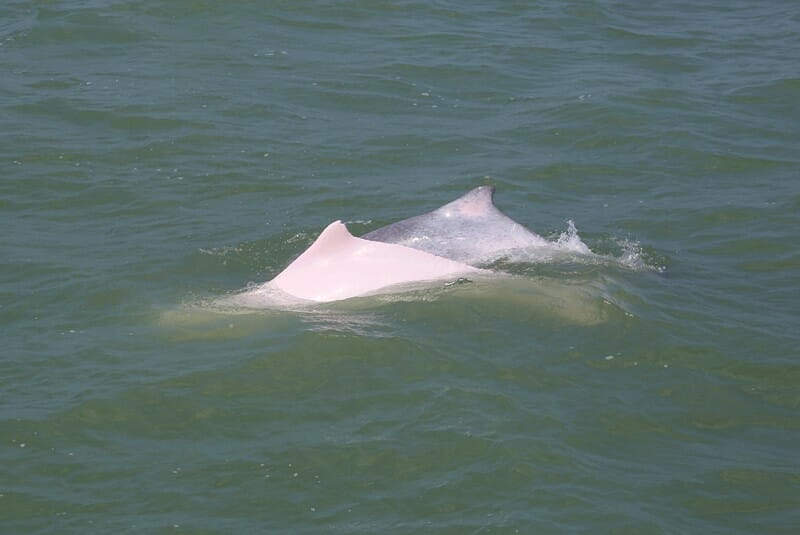
Change the shooting mode of your camera to “continuous”, so that your camera takes multiple shots when you press the shutter button. Make sure you have space on your SD card as it’s possible that only a handful of photos will be worth keeping out of hundreds and hundreds!
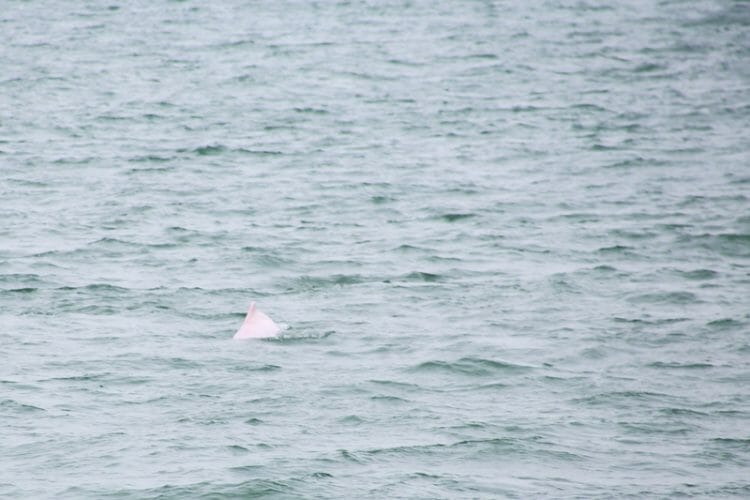
When trying to take a photo of a pink dolphin, don’t have your camera zoomed in all the way to begin with – once you’ve spotted one, take a mental note of its approximate position and direction.
Here’s where it gets tricky: you’ll have to try to predict where the dolphin will come up for air again (it will in a few seconds, be patient), and you can start zooming slowly once you have a better grasp of where the dolphin is. You may also want to half-click as you’re waiting to try to focus on the dolphin when it surfaces.
What to bring on the pink dolphin spotting tour

Comfortable clothing – remember, Hong Kong has 4 seasons and gets cold in the winter! If you’re prone to sea sickness, bring a dramamine tablet (take it half an hour before you hop on the boat). Bring sunscreen, water and your sunglasses as you might be standing in the sun for a while.
What you can do to help the pink dolphins in Hong Kong
Support responsible dolphin watching operators like Hong Kong Dolphinwatch. The worst thing you can do is to pay for a tour (like this one that we encountered) with a million people making a ton of noise, chasing the dolphins around and constantly keeping its engine on.
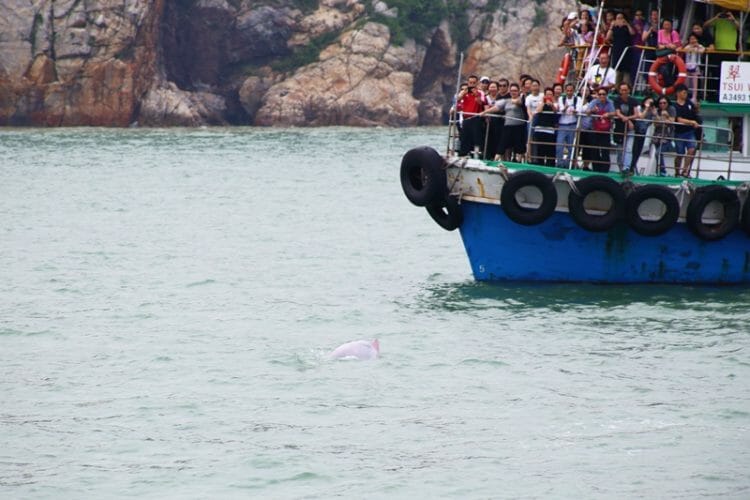
Donate to the Hong Kong Dolphin Conservation Society to support the research, education and public awareness programs that engage Hong Kong communities on local and regional dolphin conservation efforts.
Reduce your personal ecological footprint and spread the word to other people hoping to go on a pink dolphin tour in Hong Kong!
Ready for the ultimate pink dolphin watching experience in Hong Kong? Click here to book the ethical pink dolphin tour, or click here for even more Hong Kong insider travel tips and guides.
Where to stay in Hong Kong
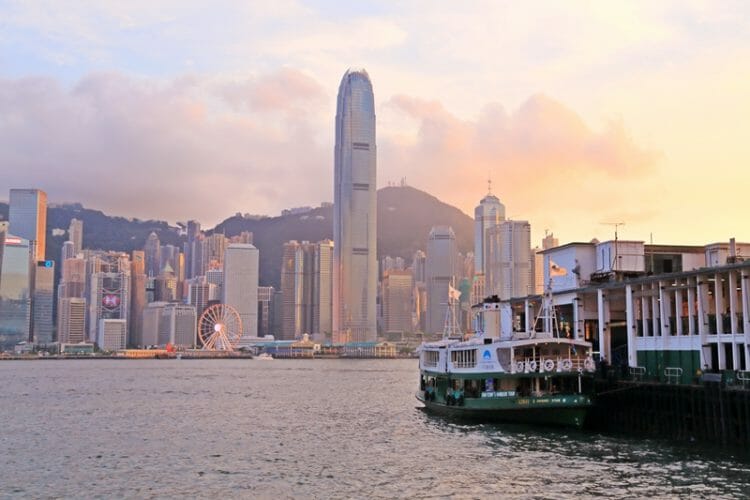
You’ll need to be strategic and book a Hong Kong hotel in a convenient location with comfortable rooms and the types of facilities you prioritize for a fabulous stay.
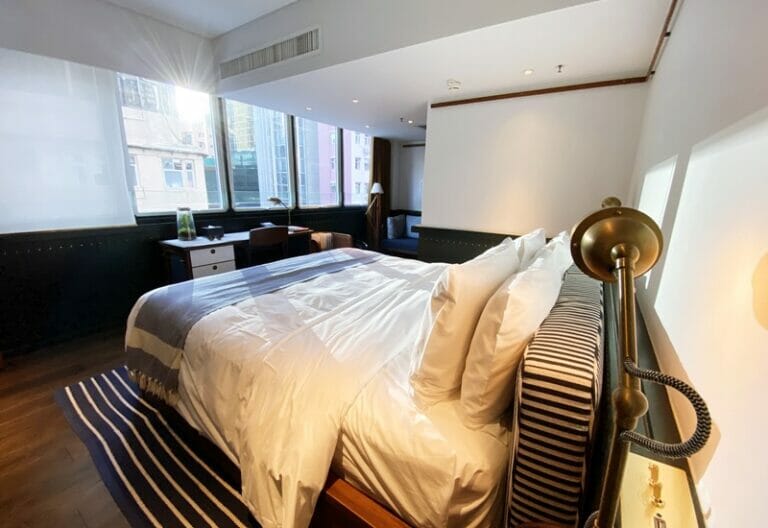

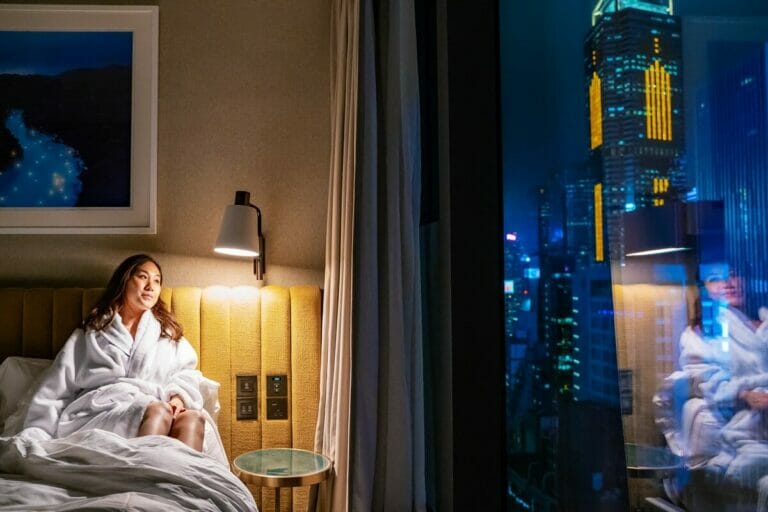

I’m a big fan of these boutique hotels in Hong Kong (photos from L-R): The Fleming, a boutique hotel in Wan Chai that features unique Hong Kong-inspired décor; Little Tai Hang is also a fantastic option on the fringe of Causeway Bay with easy access to the MTR; Ovolo Central is a playful option conveniently located in the thick of it all but away from the crowds; and The Hari, the latest property to grace the boutique hotel scene in Hong Kong.
You can also click here to see even more accommodation options in Hong Kong.
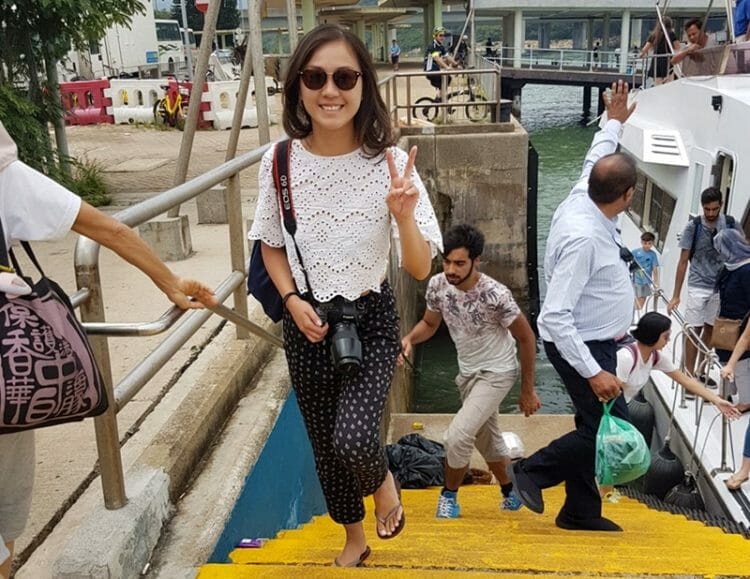
I can’t believe our luck and was pinching myself for hours both times after the Hong Kong pink dolphin watching tour ended. If you are looking for unique things to do in Hong Kong, add this to your Hong Kong itinerary!
Looking for more insider Hong Kong travel tips? You may also enjoy these reads:
- For even more easy Hong Kong day trip ideas head on over here!
- Click here for unique things to do in Hong Kong that probably aren’t in your guidebook
- Read this guide for even more Hong Kong dos and don’ts
- …and head on over here for even more Hong Kong insider travel guides
Pin this for later!
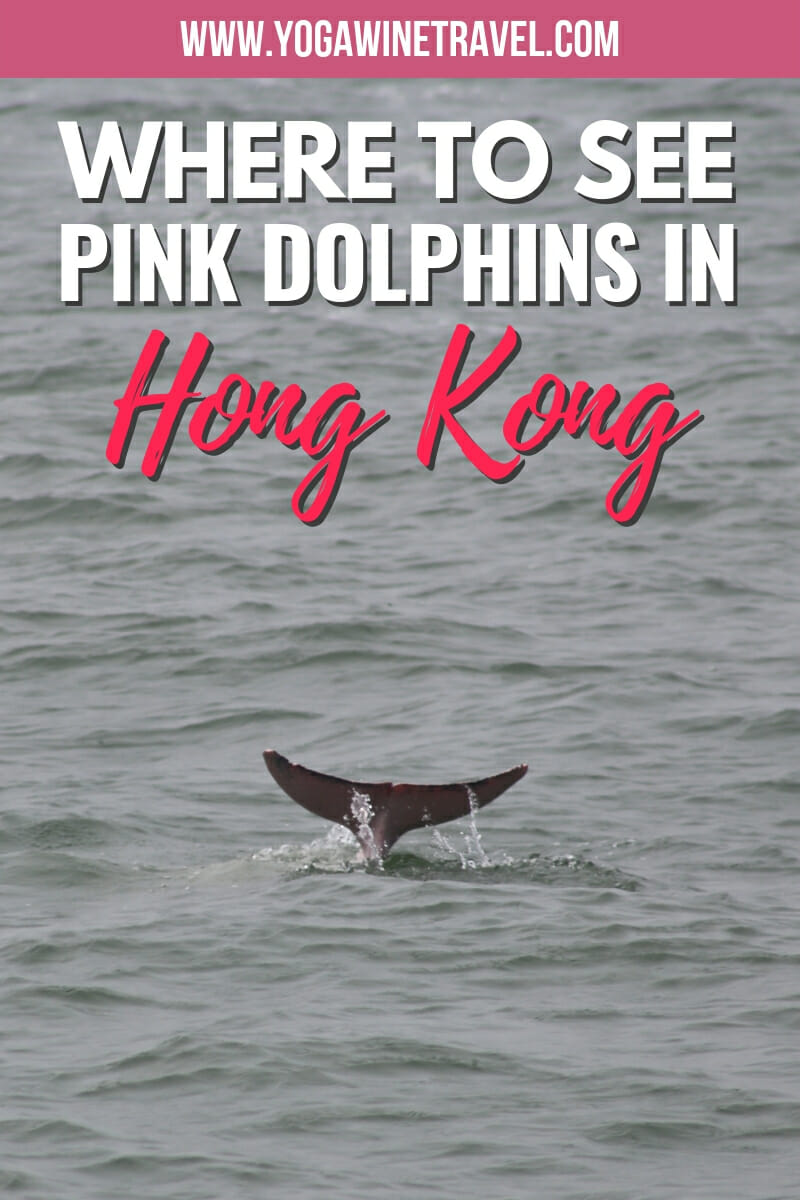
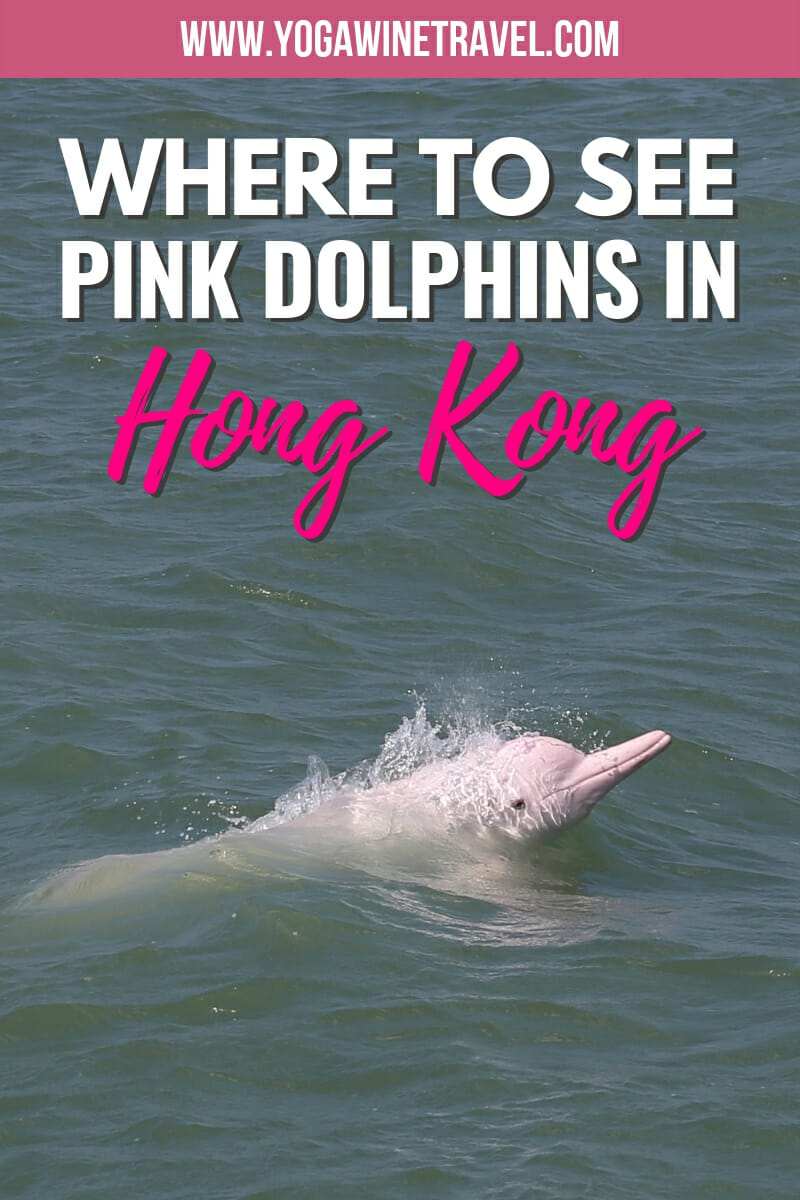
Just so you know, we happily paid for this tour both times. This article contains affiliate links. If you choose to book using these links, I will earn a small commission at no extra cost to you. Thank you for supporting my website by using these links.
Video music credit: Anno Domini Beats – Welcome / Youtube Audio Library
Enjoyed reading this article? Subscribe to the mailing list!
* Unsubscribe at any time. Your e-mail address will only ever be used to send the occasional Yoga, Wine & Travel newsletter.

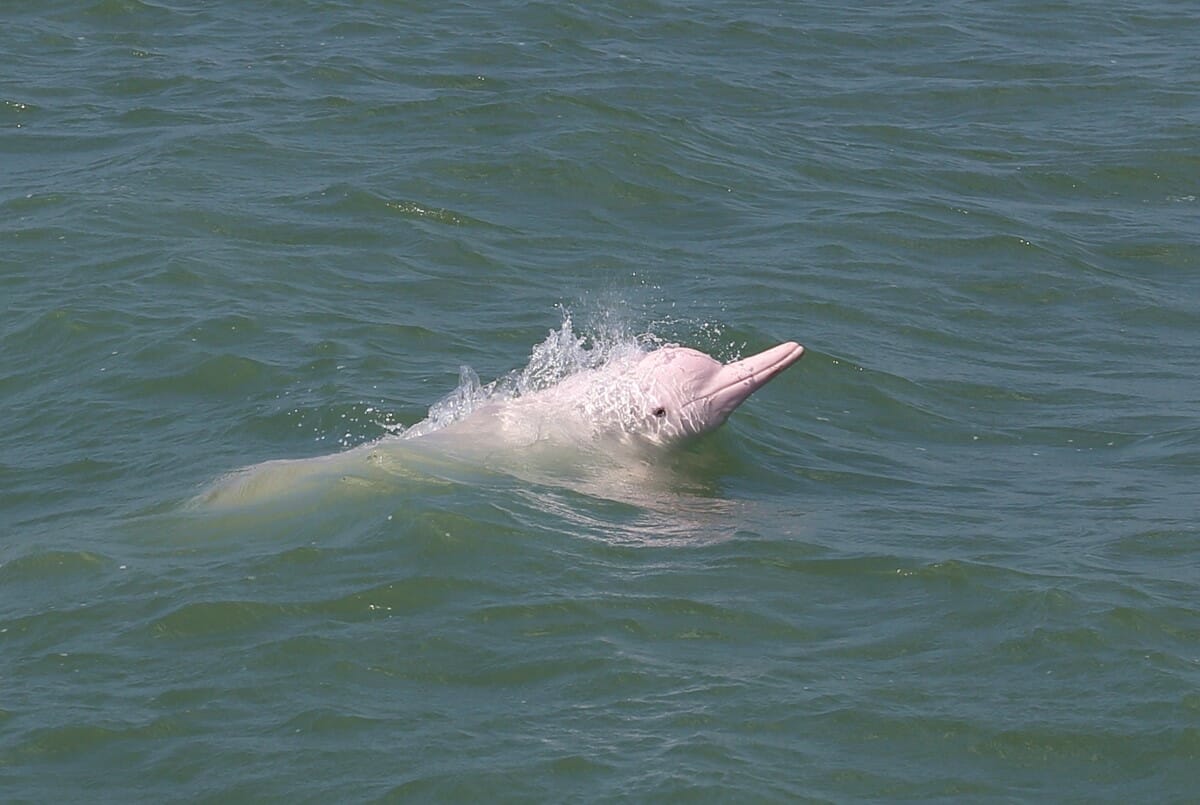



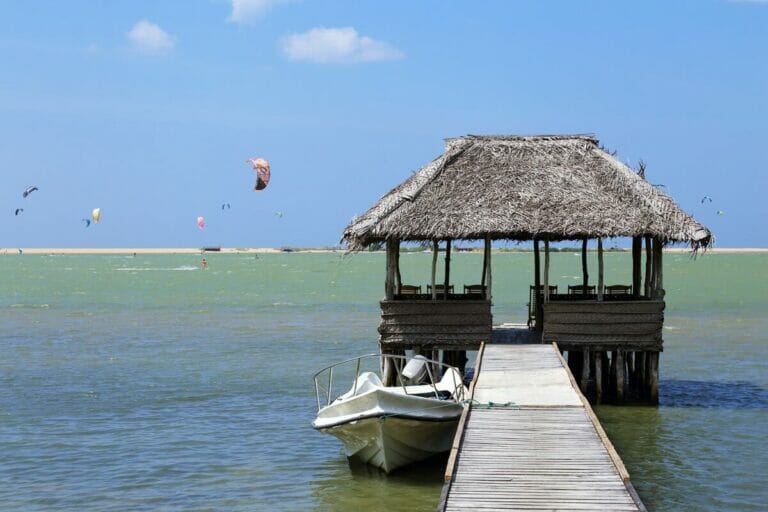
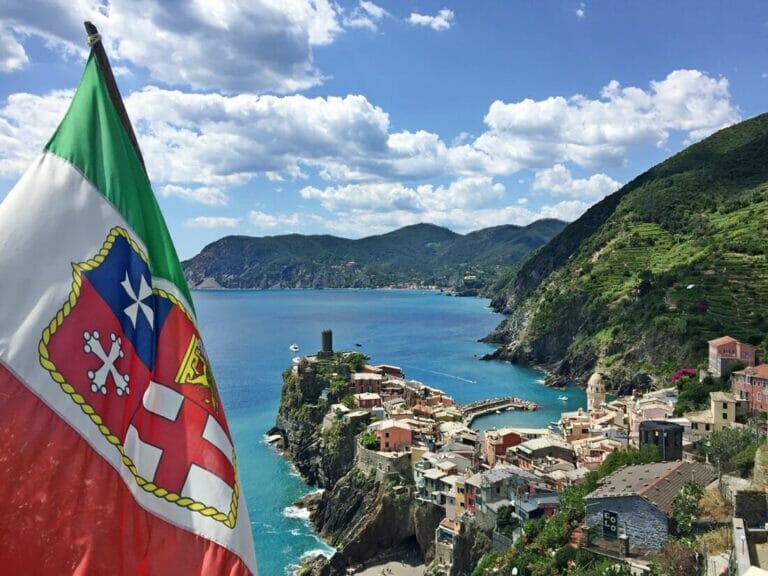


I have never seen a dolphin like this before. You did mention that having a good camera would help. I’ll look into that along with making a trip to try and see them.
Hi Callum, there are a few in the Pearl River Delta region, and I believe some in the Amazon as well. I hope you get to see some in the wild soon!